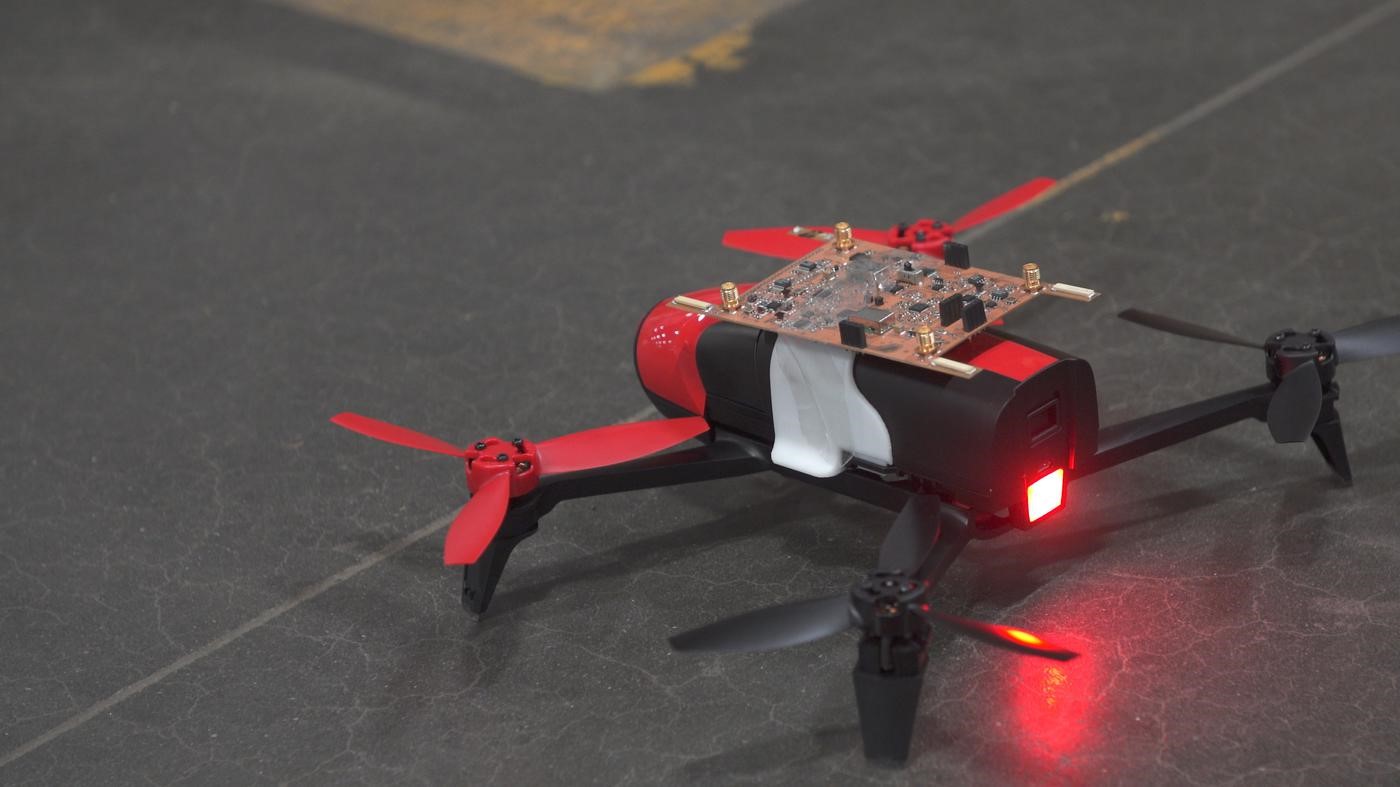
Image via Media.mit.edu.
By Brian Santo, contributing writer
Ever misplace your car keys? I can’t find my car keys in a 1,400-square-foot house. Now imagine you’ve misplaced your car keys in a warehouse big enough to moor two dozen Goodyear blimps. Now imagine that millions of other people misplaced their car keys in that same warehouse. Now imagine that some guys from MIT figured out how to use drones to identify them all for retrieval. I’d nominate them for a Nobel or a MacArthur or something. They want a Tony? Whatever, just give it to them.
Warehouses and shipping facilities are enormous; the smallest of Walmart’s warehouses, for example, is roughly the size of 17 football fields. Hundreds of billions of parcels — packages, boxes, and bags — move through these facilities every year. The cumulative amount of worldwide losses due to poor inventory control reaches into the billions of dollars.
One means of inventory control is to use RFID tags, battery-free sensors that are passive until a reader is brought close enough to trigger a response. In a densely packed warehouse, however, a tag can get buried under boxes or other merchandise or get obscured by obstructions (structural beams, shelving, etc.). An RFID reader has to be brought close enough (a couple of meters at most, tens of centimeters at least), which means that taking inventory must still be done by hand, a process naturally prone to error. It is easy to lose track of some inventory.
A drone will almost always be able to maneuver faster than a human, especially in warehouses with vertical storage. Walmart, for one, has experimented with drones mounted with cameras. That might be faster, but vision-based inventory systems are limited to line of sight and, therefore, also defeated by boxes stacked rows deep, packages obscured by obstructions, and merchandise stored in layers.
Which leads back to RFID systems. But just sticking a reader on a drone isn’t enough. The system must be able to power the RFID tags and provide location data that’s precise enough.
Three guys from MIT developed a system, called RFly, that depends on a pair of innovations: a full-duplex relay for battery-free networks and what they claim in their paper is the first RF-localization algorithm that can operate through a mobile relay. RFly’s RFID reader and support electronics fit on a board small enough to be affixed to a standard commercial drone.
Their approach includes having the RF reader ping RFID tags four times each as the drone moves by. The localization algorithm then calculates each tag’s position in space. The prototype has a median error that fixes a location within roughly half a foot (they are certain that they can do better with refinements).
Sounds easy, but it was anything but. The researchers had to employ self-interference cancellation to enable the bidirectional, full-duplex communications, which they said inadvertently introduced random phase and frequency offsets that “could preclude localization.” They had to add a means to control both uplink and downlink forwarding to compensate.
To perform the localization, the relay on the RFly system captures multiple responses from each tag, emulating an antenna array. That created a problem, however. “[Because] the reader obtains phase measurements through the relay, the measured phase does not consist of a single link (direction) as in typical antenna array scenarios,” the researchers report in their paper. “Rather, the phase is an entanglement of two half-links: one between the reader and the relay and another between the relay and the RFID tag.”
Their solution was to embed an RFID into the relay itself, which allowed them to isolate each of the two half links and process them independently.
It’s a research project, so refinements will, of course, be necessary. Currently, the drone is directed using a vision-based system, and so it has to fly at a certain height to remain in view. The operation range is limited (55 meters), but there are ways to increase it, including improving the self-interference cancellation technology. RFly could conceivably work with swarms of drones.
Still, the prototype gets 100% read rates with line of sight up to 50 meters and 75% in non-line-of-sight instances at up to 55 meters. The median error on location makes RFly comparable to state-of-the-art location systems, say the researchers.
Advertisement
Learn more about Electronic Products Magazine





